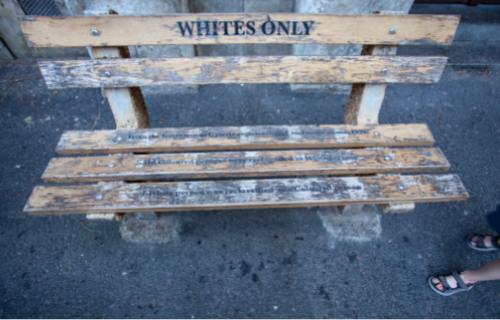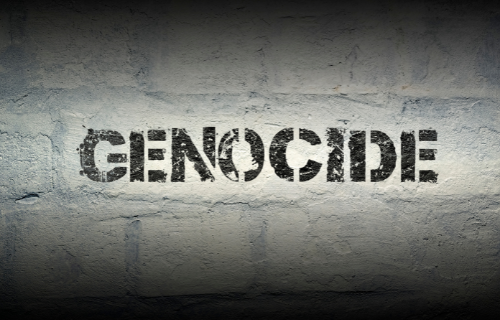The Difference Between Apartheid and Genocide
Apartheid and genocide are discriminatory and criminal actions taken by one group of humans against another group based on their race, ethnicity, religious beliefs, or culture.
While they both tend to lean towards the believed supremacy of one group, the way in which they are meted out are in fact very different.

What is Apartheid?
Apartheid (a word coming from Afrikaans for ‘distancing’) was a system of racial segregation that saw black people separated from whites. It was enforced in South Africa and Namibia from 1948 until 1994, affecting over 20 million black, colored, and Asian (including Indians) South Africans.
The term has come to mean any racially-based policies applied in any state. Apartheid was declared a crime at the United Nations International Convention of 1973, where the UN General Assembly denounced Apartheid and all it stood for. The meeting of the Geneva Convention in 1977 saw apartheid designated as a war crime, and a serious violation of the protocol adhered to and signed by all 169 parties. Apartheid came to an end in 1994 when South Africa held its first free and fair elections, with people of color being given the right to vote for the first time. A staggering 20 million people of color placed their votes that day, swearing in the African National Congress as the country’s ruling party, and its leader, Nelson Mandela, becoming the first black president of new democratic South Africa.

What is Genocide?
Genocide is the slaying or destruction of a group of people by another group for religious, racial, ethnic, or political reasons. The most popular or studied cases of genocide were witnessed in World War II with Nazi Germany, and also in Rwanda where the Hutu tribe slew up to 800,000 Tsutsi’s. But the fact remains that genocide has taken place throughout human history.
In ancient times, people such as the Mongols, Muslims, and Christians vied for dominance and territory. Genocidal tribal raids occurred throughout time, and even in the second half of the 20th century. Most major genocides have taken place either during a war or as a consequence of war, but a ruling in 1998 saw genocide being applied in both times of war and peace. Genocide is increasingly seen as a “major phenomenon of modern world history, and has become the subject of the growing interdisciplinary field of genocide studies.”
What are the differences between apartheid and genocide?
Apartheid and Genocide have both been viewed as crimes against humanity, but there are vast differences between the two.
Apartheid vs Genocide: Similarities and Differences
| Groups affected | Direct deaths | Forced Movement | Convictions | Origins | |
| APARTHEID | Based on race | zero | Yes | None | South Africa |
| GENOCIDE | Based on race, culture, ethnicity and religion | Millions | Yes | Many | Germany |
Based on the table above, we are able to see the similarities and differences between apartheid and genocide a a glance. While both were aimed at a specific group, the biggest difference is the number of deaths of these groups.
Apartheid was focused on oppression, forced movement to designated areas, limiting of contact between groups, and there were no convictions for the crimes associated with apartheid. To date, not a single person has been convicted of apartheid-related crimes against humanity.
Genocide was focused on eradicating a particular group, based on their difference in religion, culture, ethnicity, or race. The most famous case of genocide was that experienced by the Jews in Nazi Germany which saw millions of Jews being killed. There have, however, been many successful convictions of individuals for holocaust/genocide related crimes.
Death Rates of Apartheid vs those of Genocide
While apartheid does not include the ruthless slaying of an ethnic or cultural group, the deep-seated emotional effects still rear their ugly head in many countries. While there has been a move towards a more democratic government, what South Africans call a “Rainbow Nation,” apartheid is still one of the most shameful acts a country ever imposed on its people.
Genocide, however, has seen many victims. One only needs to look at the numbers to see the true brutality of this practice. Let’s take a look at the more famous cases of Genocide in the last century and how many people lost their lives due to their difference in race, culture, ethnicity, or religion:
- Cambodia (1975 to 1979): 20% to 25% of the population was killed under the regime of Pol Pot and Khmer Rouge, a communist force that set out to build an agrarian model based on Maoism and Stalinism. The genocide included a forced move to the countryside of people from the cities, torture, forced labor, starvation, and mass execution. The objective of the Cambodian genocide was to purify the population, and create a master race, much like the ethos of Nazi Germany.
- Germany and Europe (1939 to 1945): More commonly called the Holocaust, the genocide of Jews in Nazi-controlled Germany during world war II led to the loss of 6 million lives under Hitler’s rule and guidance. Hitler’s desire for what he called an Aryan race saw Jews across Europe being ousted from their homes, jobs, and schools, and into concentration camps where many were executed upon arrival or died due to starvation or illness in the biggest case of antisemitism the world has ever seen.
- Rwanda (1994): The slaying of almost 800,000 Tsutsi men, women, and children by the Hutu tribe in Rwanda was one of the most recent acts of genocide. With more media coverage available due to a rise in technology, the world stood and watched in silence as people were massacred in their homes, schools, and on the streets.
- As we speak, and since 1962, Papua New Guinea is subject to genocidal activity from the Indonesian security forces, with estimates of between 100,000 and 300,000 Papuans killed to date. This violence continues today.
The value of human life and death is considered a purely material calculation in some politically violent regimes. For example, the cost of keeping a Cambodian citizen alive, their metabolism of rice, was weighed up against the foreign exchange profit for that rice on the global market. Pol Pot’s view was that every grain of rice eaten by a citizen laborer reduced state profits, so the party let people die of starvation and in forced labor to let others live who supported their political vision.
What measures have been put in place to curb incidents of Genocide and Apartheid?
While the effects of apartheid and genocide could never be measured on the same scale, they have had similar interventions from the United Nations, with both being declared international crimes against humanity. What has the UN done to resolve these atrocities?
The United Nations has based its existence on the ethos of “Peace, Dignity, and Equality on a healthy planet.” With 193 member states from all across the globe, their main focus is peace-keeping between continents, countries, and their citizens.
The United Nations played a large role in putting an end to the Apartheid era as well as the genocide of millions.
Conclusion
While many religious, cultural, ethnic, and political groups still seek ways to prove their believed supremacy, one can only hope that this does not see countries returning to states of apartheid and genocide with measures put in place to prevent these atrocities.
- Difference Between Vascular Cambium and Cork Cambium - November 1, 2023
- Difference Between DevOps and Developer - September 10, 2023
- Difference Between Acute Gastritis and Chronic Gastritis - April 3, 2023
Search DifferenceBetween.net :
Leave a Response
References :
[0]https://www.history.com/topics/africa/apartheid#:~:text=Apartheid%20(%E2%80%9Capartness%E2%80%9D%20in%20the,existing%20policies%20of%20racial%20segregation.
[1]https://www.un.org/en/genocideprevention/documents/atrocity-crimes/Doc.10_International%20Convention%20on%20the%20Suppression%20and%20Punishment%20of%20the%20Crime%20of%20Apartheid.pdf
